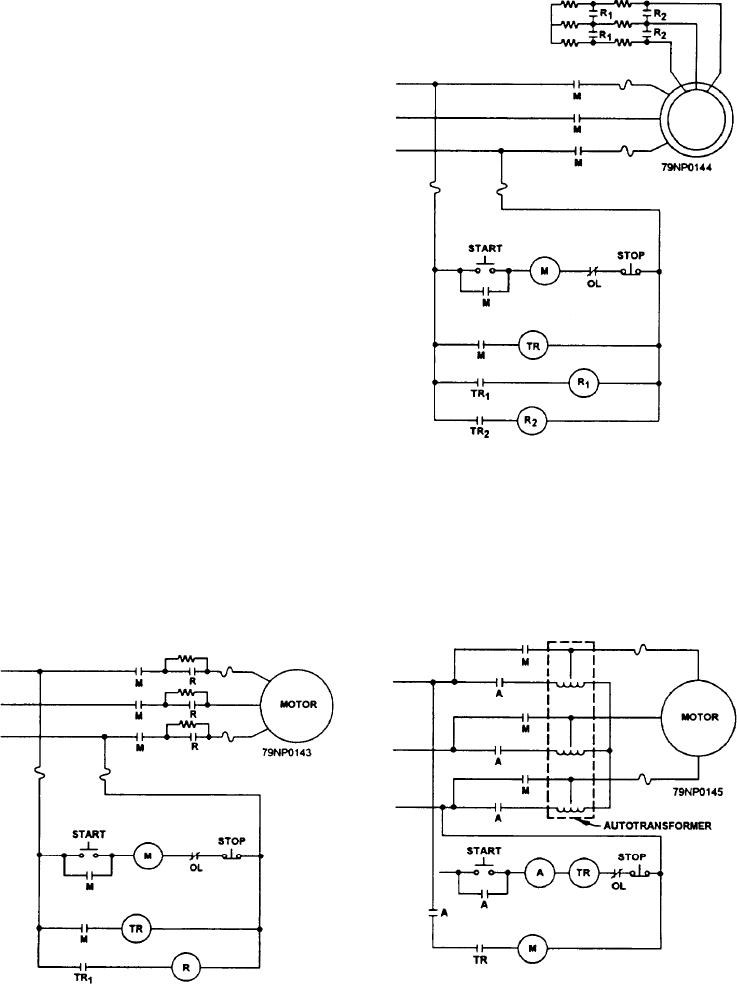
motors can withstand the high starting currents caused
by starting with full-line voltage applied. Most
squirrel-cage motors drive pumps, compressors, fans,
lathes, and other auxiliaries. They can be started "across
the line" without producing excessive line-voltage drop
or mechanical shock to a motor or auxiliary.
AC PRIMARY RESISTOR CONTROLLER
In an ac primary resistor controller, resistors are
inserted in the primary circuit of an ac motor for both
starting and speed control. Some of these controllers
only limit the starting currents of large motors; others
control the speed of small motors, as well as limiting the
starting current.
Figure 6-2 illustrates the use of resistors to limit the
amount of starting current.
AC SECONDARY RESISTOR
CONTROLLER
In an ac secondary resistor controller (fig. 6-3),
resistors are inserted in the secondary circuit of a
wound-rotor ac motor for starting or speed control.
Figure 6-3.--Schematic of an ac secondary resistor controller.
Although sometimes they are used to limit starting
currents, secondary resistor controllers usually function
(fig. 6-4) starts the motor at a reduced voltage through
to regulate the speeds of large ac motors.
an autotransformer and then connects the motor to line
voltage after the motor accelerates. There are two types
AUTOTRANSFORMER CONTROLLER
of compensators--open transition and closed transition.
The autotransformer controller (or compensator) is
an ac motor controller. The autotransformer controller
Figure 6-2.--Schematic of an ac primary resistor controller.
Figure 6-4.--Schematic of an autotransformer controller.
6-2

